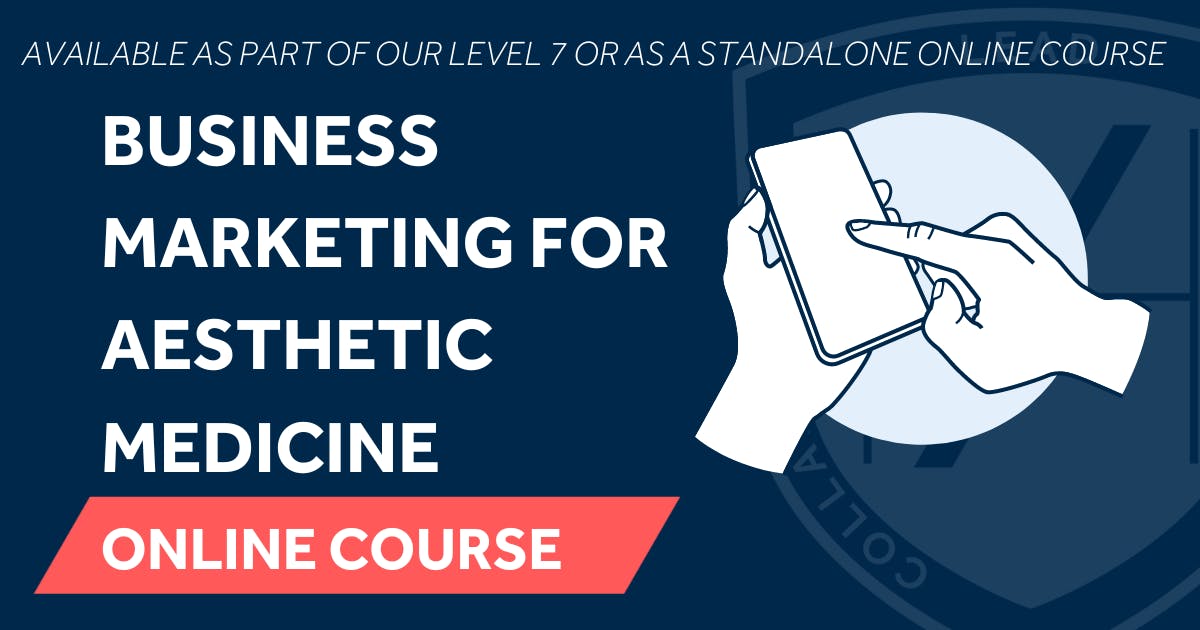10 Dos and Don’ts: Social Media for Aesthetics Practitioners
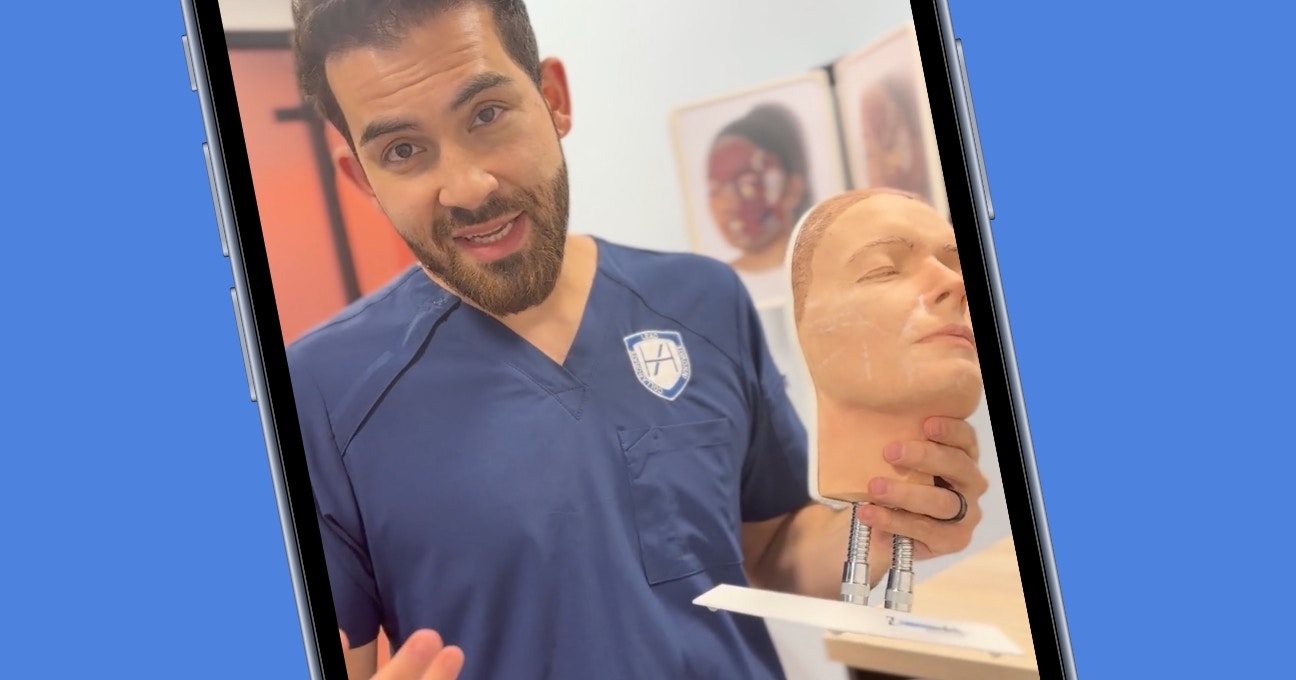
Due to advertising regulations in the UK, we often hear concerns regarding social media for aesthetics practitioners. Injectors often tell us they “don’t know what they can post about”.
We agree that, thanks to prescription-only medication rules, it’s certainly a minefield!
So how do you know what you can and can’t say regarding toxin treatments?
Going further, social media platforms also tend to have their own rules about what can be posted. Contravening these can result in a limited audience reach so your posts are shown to a smaller number of people, or bans. How do you navigate these with your social posts?
We spoke to our Content Director, Sarah McGiven, for her insights. Sarah has specialised in social media and website content for over 13 years, 9 within cosmetic medicine.
Here she provides a list of 10 things to remember to help your social media colour within the lines!

Social media guidelines for aesthetics practitioners
As social media is a fast-paced business, it’s worth pointing out that the rules regarding what platforms find acceptable is always subject to change.
Always refer to your social media platform terms and conditions of use - usually found in your User Agreement - for the most up-to-date information on each channel’s policies.
As we all know, aesthetics regulation in the UK - and most other regulation - moves at a glacial pace. It’s worth keeping an eye on the CAP and ASA websites for updates, however, these happen far less frequently than social media platform policy changes.
1. DO: Watch this CAP video on the advertising rules for botox
“CAP - the Committee of Advertising Practice - made this incredibly helpful Bitesize video to set out the rules for talking about botulinum toxin treatments online. This is fantastic, straightforward guidance for all aesthetics practitioners to follow," Sarah advises.
“CAP writes the rules, which are then enforced by the Advertising Standards Authority - the ASA.”
“Although this video specifically talks about botox, it applies to all prescription-only medication. So, the same rules apply when talking about other POMs - hyaluronidase, for example.”
2. DON’T: Use any pseudonyms for botox in your social media
“It’s a common misconception that calling botox ‘anti-wrinkle treatment’ or ‘wrinkle relaxer’ is ok. Unfortunately, despite the prevalence of terms like this across social media, these are not permitted by the Advertising Standards Authority. This applies to all promotions - social media, your website, flyers, posters - any form of marketing.
“Botulinum toxin is still a prescription-only drug and, therefore, the advertising or promotion of it - which social media posts are considered to be - either directly or indirectly, is not permitted.
“This is also explained in the above CAP Bitesize video.”
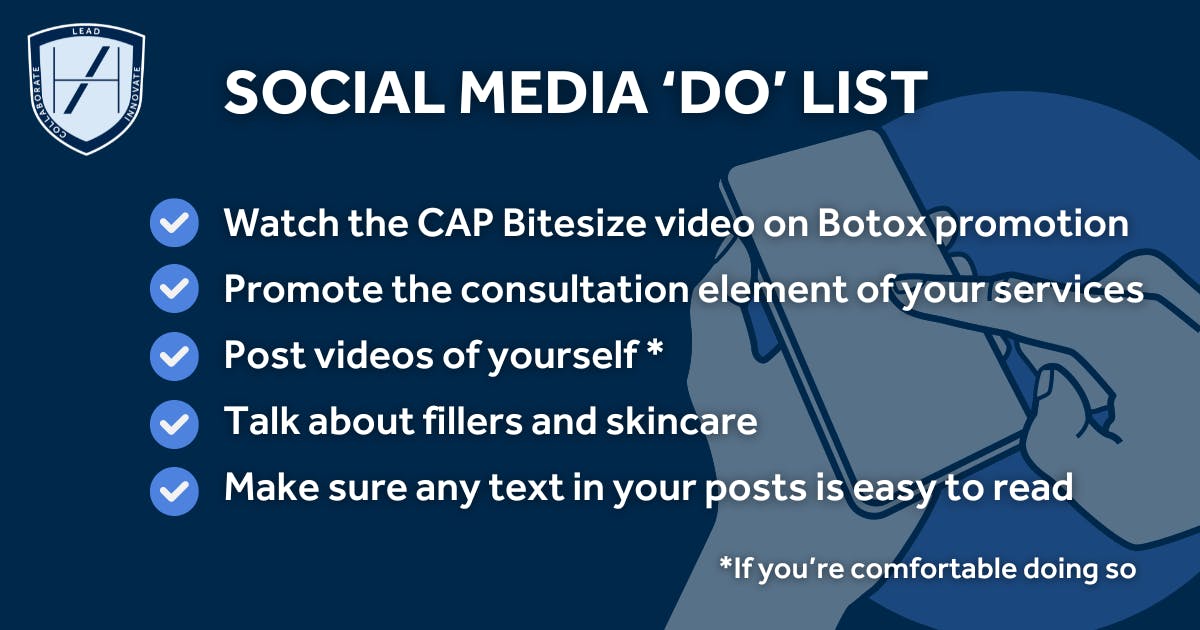
3. DO: Promote your consultation services to navigate the botox rules
“I’m often asked how people can ‘get round’ the CAP rules on botox posts on social media. The easiest way to do this is to promote your consultation services. Let people know what concerns you can help them with and promote your consultation for this.
“For example, you can post a photo or video of yourself advising a - consenting! - patient during a consultation. This can include you talking about - or a caption stating something along the lines of:
‘School holidays left you feeling like you’re looking tired, angry, or your face has lost a bit of its youthfulness? Come in for a face-to-face consultation to find out how I can help you. As a qualified aesthetic medicine professional, I will listen to your concerns and goals. I’ll take your medical history then assess your face and discuss my personalised recommendations with you. These are always bespoke, based on uplifting your unique, natural beauty’.”
4. DON’T: Post imagery containing prescription-only medications or needles
Social media posts and prescription-only medications
“If you're a cosmetic treatment provider, photos or videos of prescription-only medications are not permitted under the CAP rules. This includes not posting imagery of:
- Injecting POMs
- Packaging they come in
- Before and After photos of patients treated with POMs.
“Again, remember that this doesn’t just apply to botox - it’s all POMs, so no posting any lip filler dissolving content, for example.”
Needle or injecting imagery on social media
“You may find your audience doesn’t like these anyway - patients can be squeamish! However, the main reason for avoiding pictures - especially close-ups - of syringes and injectable treatments in progress is classed as ‘sensational content’," Sarah counsels.
“Increasingly, accounts that post photos including injection images or videos are having that content flagged as ‘sensational’ or ‘graphic’. This is also - again, anecdotally - resulting in fewer people seeing those posts.
“Syringes and injecting can be deemed disturbing - especially if there’s blood visible - so, there are two things you can do. One, don’t post any. Two, when you’re taking photos or videos, choose an angle that doesn’t show the needle but it’s clear to the viewer what’s happening.
“Just be wary of using this type of content for a ‘boosted post’ or paid advert on Meta platforms as it most likely won’t be approved.”
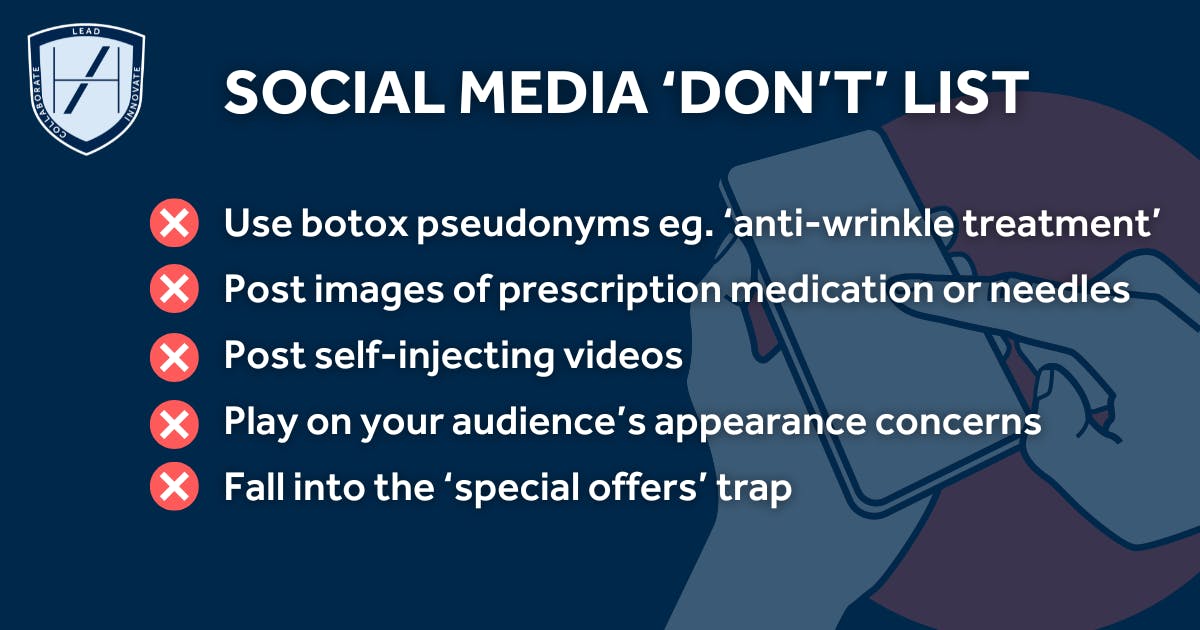
5. DO: Post videos of yourself
“TikTok, Instagram and YouTube all promote video content and the type that tends to do the best, is when you show your face. It could be talking answering common questions you’re asked by patients, or just introducing yourself and talking about what you’ve done in clinic that day.
“Whatever it is, social media platforms love videos that provide an authentic experience for their viewers. Content that allows users to connect with you and, as a result, your business.
“If you want to grow your reach - the number of people who see your content - and build a relationship with your audience, this is a great way to do it. It can be really daunting for some, though. If it’s not your thing, don’t force it. There are plenty of other ways to engage on social media without showing your face on camera. Although trying it and seeing yourself get better at it can be a liberating experience!”
6. DON’T: Post self-injecting videos
“This has become an issue in recent times due to the proliferation of mostly American cosmetic doctors posting botox self-injecting videos. In the UK, this is not only frowned upon and against CAP guidelines. It can also result in sanctions from your medical regulatory board.
“This is because self-administering this prescription-only medication is against the codes of conduct of UK medical regulatory boards. The General Medical Council and General Dental Council, for example.”
Sarah adds, “Do these videos get a lot of eyeballs on them? Yes - especially those where it has a particular visual appeal or shock factor. Jelly roll botox under the eyes and split-face experiments where one side is self-injected with toxin and the other isn’t, are attention-grabbing for sure. Are those views worth potentially losing your medical licence over, though?”
7. DO: Talk about fillers and skin treatments
“You’re on pretty safe ground when talking about non-prescription treatments. These include fillers - which gives you a lot of material! - skin treatments and skincare.
“Skincare is a huge topic on social media platforms, so choose your topics and hashtags wisely to appeal to the demographic you’re trying to reach."
8. DON’T: Play on your audience’s appearance concerns
“There are CAP rules around not making people feel bad about themselves, including their appearance,” Sarah highlights.
The CAP code pertaining to body image states, “All marketing communications should be prepared with a sense of responsibility to consumers and society (rule 1.3). Advertisers should ensure that they don’t portray particular body types in an irresponsible manner or present an unhealthy body image as aspirational, exploit people’s insecurities about their body image, or suggest that happiness or wellbeing depends on conforming to a particular physical appearance, or gender stereotypical body type or physical features (rule 4.9).”
She notes, “This is an easy trap to fall into by accident when talking about aesthetic concerns. For example, you often see particularly cheesy, unbelievable lines around Valentine’s Day promotions. Things like, ‘Guys, get the defined jawline of your dreams to help you win the girl of your dreams!’
“Problematic on many levels but, from an ASA perspective, it’s tying the outcome from having a cosmetic procedure to improving your love life. This implies they’re required to look a certain way to achieve happiness, which is against code.”
“This is a really blatant example but there are plenty of more subtle versions. See how many aesthetics clinics say things like, ‘Get your confidence back’ when advertising filler treatments. Once you know, you won’t be able to stop seeing them!
“The easiest way to avoid these pitfalls is to take a factual, clinical approach to providing information. Avoiding playing on emotions linked to appearance and taking a more educational stance is a good general rule of thumb.”
9. DO: Make sure any text posts are legible
“With Instagram opening up carousel posts to 20 tiles, this is a great way to appear in people’s feeds more. If they scroll past your post once, they’ll be shown it in their feed again - and again - with a different tile. This increases your chances of being seen by prospective patients so it’s an easy win, even if you just post two or three tiles. You don’t have to post the maximum 20!
“Often static posts, including those used in carousels, include text. Have a think about recent examples you’ve seen from various injectors or clinics you follow. You may have noticed a trend for neutral colour palettes and fine, swirly line drawings of faces. It’s been pretty prolific for a while now and there’s almost always one huge issue with designs using it… You can’t read them!
“Accessibility is generally associated with website design. It’s where you need to ensure there’s a specific ratio of contrast between the background colour and the text colour. Free accessibility checkers are easily found online, where you choose your background colour and your text colour. The website will then tell you if your colours pass - they’re sufficiently different so are deemed easy to read - or fail if there’s not enough contrast.
“Whilst a lot of social media algorithm criteria is kept under wraps, accessibility is now being talked about as a factor. Anecdotal reports suggest Instagram posts with hard-to-read text may experience a limited reach. This means that, unless you already follow the account, you may not be served this content.”
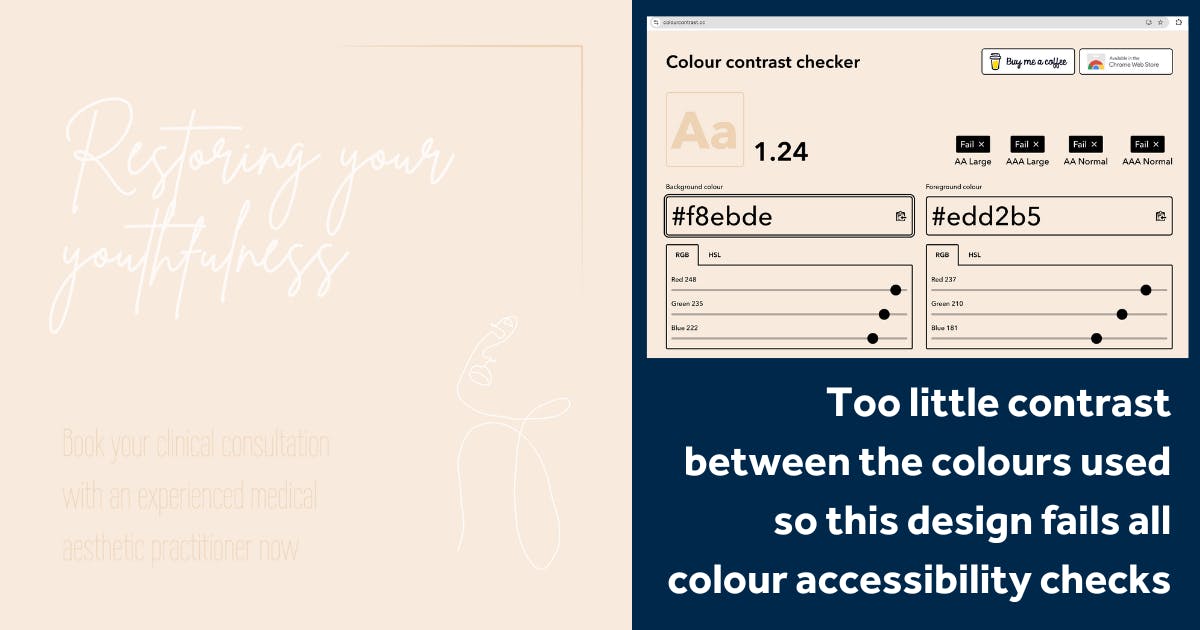
An example of a hard to read, inaccessible design for social media
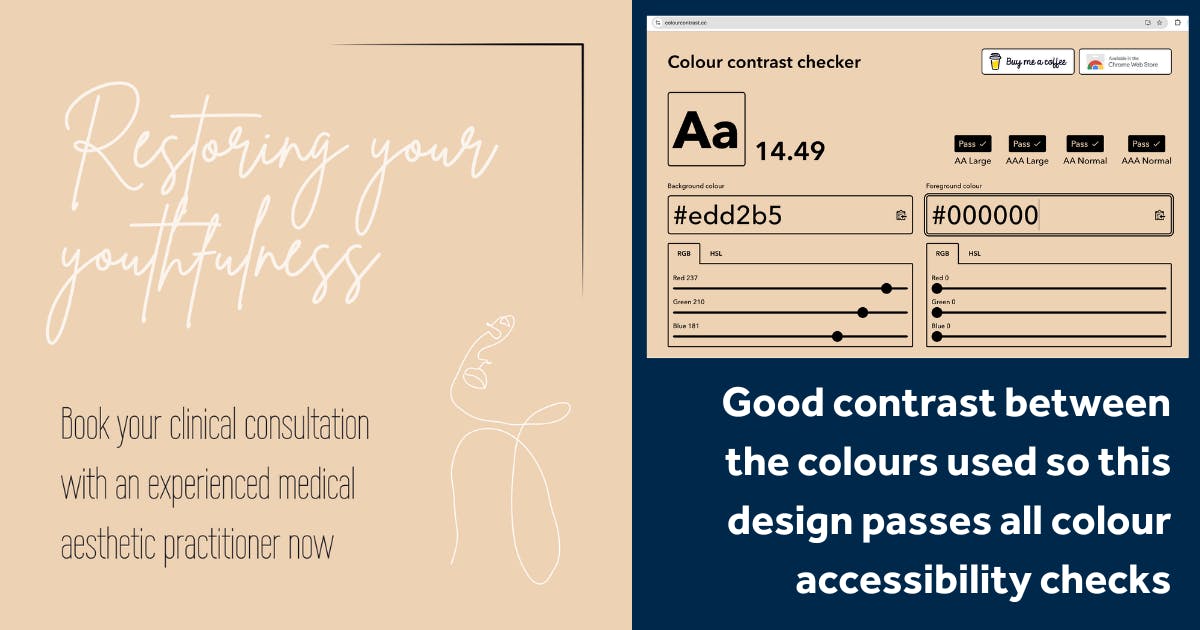
The same design made more accessible and easier to read due to increased colour contrast
10: DON’T: Fall into the ‘special offers’ trap
“There are a lot of rules in place to safeguard patients when it comes to being ‘forced’ into cosmetic treatments. This includes offering special offers that have to be taken up within a short timeframe, ‘3 areas for the price of 1’ toxin promotions, et cetera," Sarah notes.
“I highly recommend all aesthetics practitioners posting professionally on social media watch the CAP Bitesize video series. These short videos explain what you can and can’t do with regards to promotions, special offers and more, in an accessible way.
“They also cover a number of other aspects of social media for aesthetics practitioners. This includes what’s considered ‘misleading’ and how to edit - or not - your Before & After posts.”
Social media advice for aesthetic practitioners
Sarah leaves us with this, "Social media isn't for everyone and if it isn't for you, you shouldn't feel bad about that! It's a fantastic tool but, in my experience, many injectors when they're first starting out get their patients from word-of-mouth referrals. From doing a great job, making their patients feel heard, understood and delivering safe results that meet their goals.
"I hope that's comforting if social media marketing is a source of concern. However, I definitely recommend having a social media presence and registering the same handle across every major platform even if you don't intend to use them.
"If all you do is complete your profile information, upload a profile photo and put up a post about where they can contact you, that can still generate enquiries. Social media channels are increasingly being used more than search engines when it comes to finding an aesthetic practitioner, so try to make the most of the free resources available."
We hope you find this information helpful and if you have any further questions on this topic, just get in touch! You can drop your questions in our Chatbot on the bottom right of this screen. Alternatively, reach out to us on Instagram @Harley_Academy
All information correct at the time of publication
Download our full prospectus
Browse all our injectables, dermal fillers and cosmetic dermatology courses in one document
By submitting this form, you agree to receive marketing about our products, events, promotions and exclusive content. Consent is not a condition of purchase, and no purchase is necessary. Message frequency varies. View our Privacy Policy and Terms & Conditions
Attend our FREE open evening
If you're not sure which course is right for you, let us help
Join us online or in-person at our free open evening to learn more
Our Partners












STAY INFORMED
Sign up to receive industry news, careers advice, special offers and information on Harley Academy courses and services


